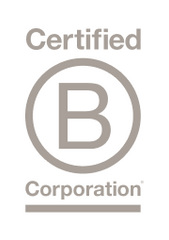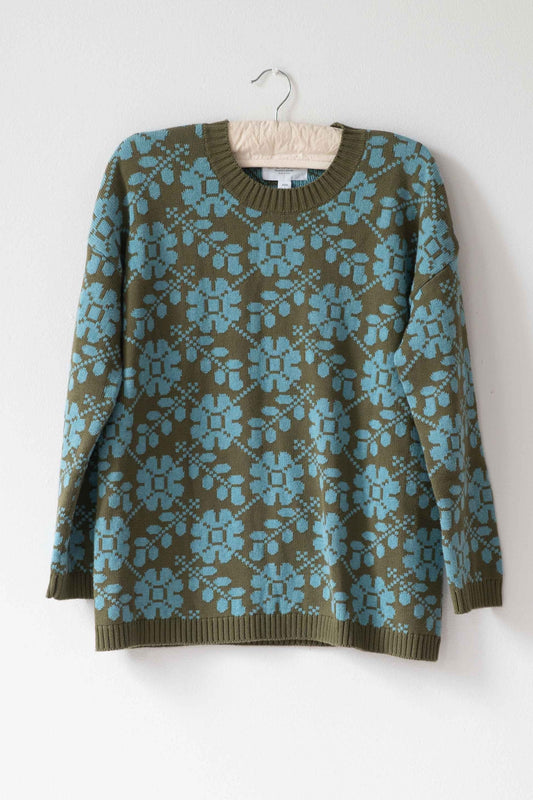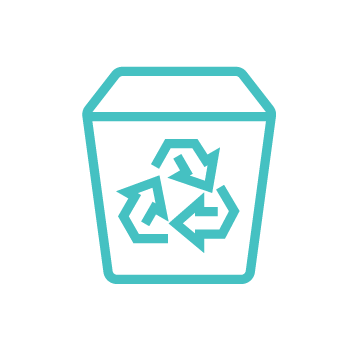
Most of Biome's readers are already on board with the health and environmental benefits of using natural skin care rather than petrochemical skin care. And in fact, much of the commercial world has cottoned on to this demand from consumers, so there is a plethora of brands representing themselves as natural. But, how do you know whether a product truly is natural or just pretending to be? The answer to this depends on where you personally wish to draw the line. We will be frank, rarely can we
"have it all". There will always be compromises between purity of the ingredients, safety, performance, convenience, ethics and affordability. So, charting a truly natural and planet-friendly course through life requires some adjustment of our mind set and expectations. However, we do feel that this pursuit of profit by being able to claim a product as "natural" is getting out hand. Inputs that once were a plant oil are being put through highly complex chemical processes that generally involve caustic petrochemicals, and then still being claimed as natural. Here's our guide to help you understand how skin care is made so that you can make an informed decision based on your situation. We unpack the process of making and preserving skin care (put your lab coat on, this is exciting chemistry stuff!), then give an example at the end of two liquid hand and body washes labelled as “natural skin care” for you to assess.
1. Close to Nature Ingredients
The most natural that you can get with skin care are ingredients taken direct from nature and not modified in any way, for example:
-
Oils extracted straight from plants without being modified by a chemical process. For example, the plant powerhouses like Jojoba Oil, Rose Hip Oil, Hemp Oil and Coconut Oil.
-
Dried plant extracts such as seaweed powder.
-
Minerals straight from the earth such as clay.

Those of us who want to use ingredients close to the state that nature intended, love using
pure plant oils like jojoba oil for moisturising, cleansing, and also making our own simple skin care products. However, we are conditioned to the feel and function of other kinds of formulations such as creamy moisturisers, lotions, gels, and foamy cleaners such as liquid hand wash. To achieve these effects, the ingredient from nature must be put through a chemical or physical process to create an entirely new chemical compound. This is where it gets complicated as the manufacturer starts to make decisions and compromises usually based first on cost, second on performance, and last on the sustainability and natural integrity of the product. It is possible to make products without the synthetic chemicals, but it often costs the manufacturer more and the product may not, for example, foam as much as the consumer expects. A common example of this is when coconut oil is used to make either:
- Cocamidopropyl Betaine: which is a synthetic detergent (surfactant) made through a complex chemical process of many stages so that nothing of the coconut oil is left; or
- Saponified coconut oil (soap): which takes just one traditional soap making step using lye (sodium hydroxide) and is still identifiable as coconut oil.
In skin care, many of these chemicals that are derived from a plant source do rely on palm oil. Palm oil's versatility and low cost has seen palm become the building block for thousands of ingredients used in cosmetics, body and hair care. And you will never know because the names are unrecognisable as palm oil. So, where do you draw the line? Will you only settle for close to nature ingredients with names that you recognise for the plant or mineral they are? Or will you accept unrecognisable chemical names?
2. Preservatives
With any product that contains water (most skin care formulations do), bacteria can breed and there is a risk of serious illness should you use a contaminated product. When a product is made for mass retail, it must be able to last for several years from the point of production to months in a warehouse and retail store, and then in your moist bathroom. The way a brand formulates its product also dictates whether preservatives are needed and how harsh they need to be. When questioned, you will often hear brands justify their use of preservatives "to keep you safe". That is part of the jigsaw, but in fact, it is possible to formulate products without preservatives. Manufacturers of mass produced cosmetics and skincare use preservatives because it enables them to churn out masses of product with a high water content and low quality ingredients to make greater profit margins, and also to give their products a longer shelf life. Preservatives can also be relatively expensive to use, so brands tend to choose the cheapest ones that 'do the job' such as Phenoxyethanol. A product that has a low pH is also more likely to breed bacteria, and that applies to liquid hand soaps and cleansers that are based on detergent rather than soap. As mentioned above, Cocamidopropyl Betaine is a synthetic detergent, and its low pH requires harsh preservatives to be used. Whereas a liquid form of real soap, such as a castille soap, has a high pH that bacteria do not like and thus requires low level preservatives. Whatever the preservative, they are generally synthetic and nasty because they are designed to kill bacteria, so that means not only in the product but on your body's skin biome as well. That is why so many people find preservatives cause skin irritation. There are very few close to nature preservative ingredients that have strong enough effect to be used for mass retail skin care, and they are expensive. To avoid synthetic preservatives, you would need to lean towards more boutique producers with small batch production and be prepared for your product to not last forever. And also, look for products with little or no water, or a formulation that does not require preservatives. For example:
Biome adopts the strictest standards on the preservatives that we refuse. For example, we do not allow Benzyl Alcohol or Phenoxyethanol. You can find our
strict "Dirty 30+" list here >

3. Fragrance
Generally, Fragrance is code for an abundance of hidden synthetic chemicals! Phthalates being just one. Fragrance or Parfum is a term initially created to protect a company's “secret formula.” But you could be applying a concoction that contains thousands of chemicals that are hazardous to your health. Fragrance mixes can contain hormone disruptors and are among the top five allergens in the world associated with allergies, dermatitis, headaches, dizziness, and respiratory distress. The problem we have is that natural brands are listing 'fragrance' and claiming it is naturally-derived but give no more details on the specific ingredients. For a fully informed decision on whether it truly is natural you would need the complete list of essential oils and preservatives. Personally, I would avoid a brand that does not list them all on the bottle.
4. Nature Identical Ingredients
This means that the ingredient being used has the exact same molecular composition in every way as the ingredient found in nature. The risk lays in what was used as the base ingredients and what processes were used to make the chemical. Benzyl Alcohol is an example of this. Other common nature identical ingredients are Potassium Sorbate (used as a preservative), Ascorbic Acid (Vitamin C used in supplements), Vitamin A and D, Salicylic Acid, Zinc Oxide (used in sunscreens), Sodium Chloride (table salt). The issue for you is that the brand generally does not disclose on the packaging whether it is the natural version or nature identical. Please contact the brand to ask them the question and hope they will be truthful.
5. Certified Organic or Certified Natural
Unfortunately, even the most strict of the independent organic certification bodies, the European COSMOS, allows a small percentage of petrochemical derived preservatives. So, let's be clear, it can be a certified organic product but still contain a small percentage of chemicals that have been made in a laboratory using petrochemicals. It is most common for these organic and natural certification bodies to require a minimum of 95% of ingredients that are organic, natural or derived from plant sources. They do however approve certain synthetic preservatives and petrochemical solvents at strict recommended levels. So benzyl alcohol and caprylyl glycol for example are allowed at 0.5-1% depending on the product. Some of the currently allowed preservatives have at times been disallowed, then brought back in. And some rate quite high for toxicity on the EWG skin deep website (ewg.org). The concern here is accumulation in the human system, which these assessors do not take into account when approving an individual product. While it may be deemed safe for that ingredient in a small percentage, what if you are rubbing numerous products on your body each day that contain that ingredient?
Your Turn to Decide
Unfortunately, there is no government regulation in Australia of the use of the term 'natural' in skin care. The ACCC has set some rules for what can be called 'organic', but there is unlikely to be a definition for natural any time soon. Meanwhile, therefore, brands are free to make their own! In our opinion, to be truly 'natural', the ingredients in the product ought to be close to nature with little modification. There are however, many other points along the scale up to a concoction of highly synthesised chemicals that had some plant oil input in the early stages, but the final ingredients are no longer recognisable with their complicated chemical names. In our opinion, the more towards the highly modified end, the more likely the ingredient is damaging to the environment and human health.
That is why the Biome difference is selecting brands for you that use simple, close to nature, recognisable ingredients. Here is a test case for you to assess. Which “natural” liquid soap would you classify as natural for you? Disclosure:
Dindi is a brand that Biome stocks and believes balances the line between function and convenience, while maintaining natural integrity.
Dindi Liquid Hand Soap 
|
Use |
How made |
| Purified water |
Diluent/Thinner |
|
| Organic Sugar |
Cleanser |
Close to nature |
| Saponified Olive Oil |
Soap |
Saponification with lye (i.e. conversion of fat into soap in the presence of an alkali) |
| Saponified Sunflower Oil |
Soap |
Saponification with lye |
| Saponified Coconut Oil |
Soap |
Saponification with lye |
| Saponified Castor Oil |
Soap |
Saponification with lye |
| Citric Acid |
Preservative |
Close to nature |
| Sodium Gluconate |
Softens water |
Aerobic fermentation of a sugar |
| Essential oils* |
Fragrance and therapeutic |
Close to nature |
| Bitter Orange Extract |
Preservative |
Close to nature |
Liquid Hand Wash from a well known Australian "natural skin care" brand
| Ingredient |
Use |
How made |
| Water |
Diluent/Thinner |
|
| Aloe Barbadensis Leaf Juice |
Filler, soothing |
Close to nature |
| Cocamidopropyl Betaine |
Detergent (surfactant), foam booster |
Reaction of dimethylaminopropylamine (DMAPA)* with fatty acids from coconut oil, then in the second step chloroacetic acid reacts with amine to form quaternary ammonium center. *DMAPA is made by reaction between dimethylamine and acrylonitrile and a subsequent hydrogenation step. |
| Decyl Glucoside |
Surfactant |
Reaction of glucose from corn starch with the fatty alcohol decanol which is derived from palm or coconut oil. |
| PEG-150 Pentaerythrityl Tetrastearate |
Emulsifier, thickener |
Tetraester of stearic acid and a polyethyleneglycol ether of pentaerythritol with an average of 150 moles of ethylene oxide, most likely started with palm oil. |
| Flower and fruit extracts* |
Fragrance and properties |
Close to nature |
| Jojoba Seed Oil |
Moisturiser |
Close to nature |
| Tocopherol (Vitamin E) |
Preservative |
Semi-synthetic |
| Glycerin |
Emulsifier |
Most often extracted from palm oil |
| Essential oils* |
Fragrance |
Close to nature |
| Sodium Chloride |
Preservative |
"Table salt" - either natural or synthetic |
| Phenoxyethanol |
Preservative, germicide, |
Synthetic Phenoxyethanol is produced by the hydroxyethylation of phenol* in the presence of alkali-metal hydroxides or alkali-metal borohydrides. *Phenol is a white crystalline solid that is volatile and requires careful handling due to causing chemical burns.Phenol was first extracted from coal tar, but today is produced on a large scale (about 7 billion kg/year) from petroleum. |
| Benzyl Alcohol |
Preservative, solvent |
Can be found in minute amounts in some fruit, but most commonly made through a synthetic chemical process using petrochemicals. Unless it states natural, it will be petroleum derived. Skin irritant. |
| Limonene and Linalool |
Preservative |
Part of the essential oils |
*Note we have not listed the individual essential oils and extracts
Article written by Biome founder, Tracey Bailey. Please let us know in the comments what natural skin care means to you? More reading Alexx Stuart's book: Low Tox Life Kate Grenville's book: The Case Against Fragrance
 Most of Biome's readers are already on board with the health and environmental benefits of using natural skin care rather than petrochemical skin care. And in fact, much of the commercial world has cottoned on to this demand from consumers, so there is a plethora of brands representing themselves as natural. But, how do you know whether a product truly is natural or just pretending to be? The answer to this depends on where you personally wish to draw the line. We will be frank, rarely can we "have it all". There will always be compromises between purity of the ingredients, safety, performance, convenience, ethics and affordability. So, charting a truly natural and planet-friendly course through life requires some adjustment of our mind set and expectations. However, we do feel that this pursuit of profit by being able to claim a product as "natural" is getting out hand. Inputs that once were a plant oil are being put through highly complex chemical processes that generally involve caustic petrochemicals, and then still being claimed as natural. Here's our guide to help you understand how skin care is made so that you can make an informed decision based on your situation. We unpack the process of making and preserving skin care (put your lab coat on, this is exciting chemistry stuff!), then give an example at the end of two liquid hand and body washes labelled as “natural skin care” for you to assess.
Most of Biome's readers are already on board with the health and environmental benefits of using natural skin care rather than petrochemical skin care. And in fact, much of the commercial world has cottoned on to this demand from consumers, so there is a plethora of brands representing themselves as natural. But, how do you know whether a product truly is natural or just pretending to be? The answer to this depends on where you personally wish to draw the line. We will be frank, rarely can we "have it all". There will always be compromises between purity of the ingredients, safety, performance, convenience, ethics and affordability. So, charting a truly natural and planet-friendly course through life requires some adjustment of our mind set and expectations. However, we do feel that this pursuit of profit by being able to claim a product as "natural" is getting out hand. Inputs that once were a plant oil are being put through highly complex chemical processes that generally involve caustic petrochemicals, and then still being claimed as natural. Here's our guide to help you understand how skin care is made so that you can make an informed decision based on your situation. We unpack the process of making and preserving skin care (put your lab coat on, this is exciting chemistry stuff!), then give an example at the end of two liquid hand and body washes labelled as “natural skin care” for you to assess.











































